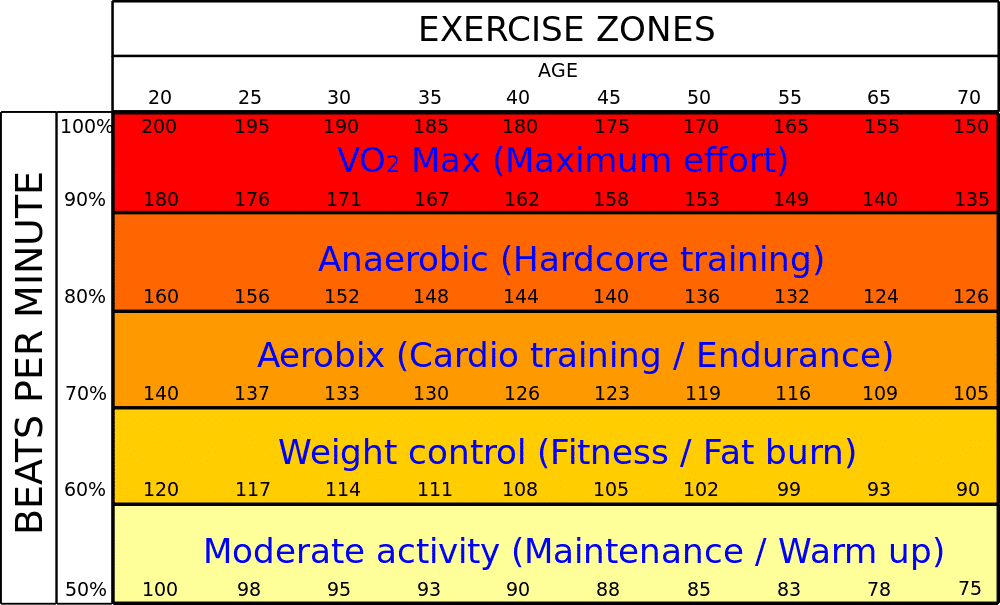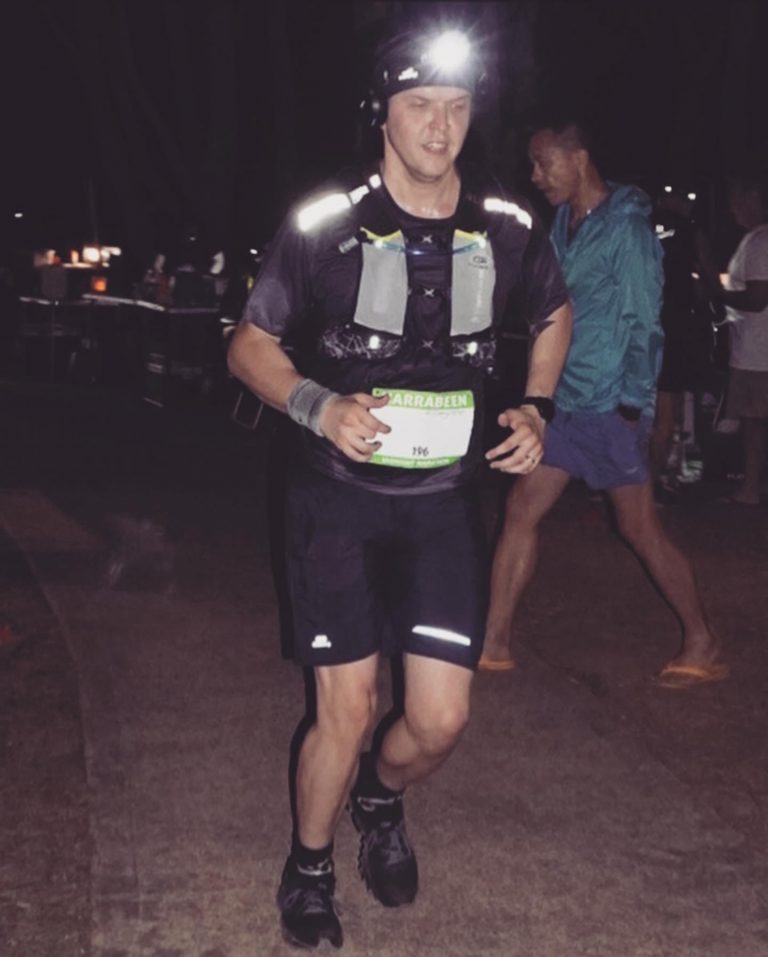Introduction
With sport watches and heart rate monitors slowly becoming the norm for the average gym-goer, you’d think more people would know what those numbers actually mean. Although most people like to use sports watches for calorie counting, the data it provides about your heart rate is often unnoticed.
When I first started running, I always thought the harder, the better. The faster, the more pain, the better. It’s hard to get this thinking out of your head when you have been advertised to “crush those miles” and get on the “daily grind.”
This “steroid talk”, as people like to call it, is turning out to be dangerous, especially for beginner runners. Some might want to go hard on the first day of training and then not be able to show up the next.
However, aside from hiring a personal trainer to guide you through your workout programs, a lot of methods that had only been used by athletes have now become more accessible. Heart rate training is one of those.
Most runners like to forgo monitoring their heart rate and focus more on pace. However, heart rate training has a lot of benefits, including having an accurate way to measure if you’re going too intensely or too feebly into your workouts.
Heart Rate Training
Your heart rate is the measure of beats per minute. This can be measured easily through several methods, including taking your pulse, using a sports watch, and of course, using a heart rate monitor where you’ll get the most accurate measurement of the three.
Heart rate training is done by monitoring your heart rate and keeping it in a certain range, or zone, something we shall be getting into later on. If you’re interested in keeping at a certain intensity without going overboard, heart rate training will be great for that.
When you monitor your heart rate, you train your aerobic system while lessening your risk of injury. Your aerobic system consists of the parts of your body that convert oxygen into energy.
The danger of overexerting yourself without proper training is feeling a lot of muscle pain quickly as your body can’t keep up with the intensity you’re going for. This is because as you work out more intensely, you’ll be leaving the aerobic process as it is too slow a process.
Instead, your body gets into the anaerobic process, which is the process of creating energy without oxygen. A by-product of this aerobic process is lactic acid, which is known to cause this pain.
On the other hand, if you train yourself to keep a steady heart rate based on your goals for the day, you’re more likely to be able to do more intense workouts. In a runner’s case, you’re likely to be able to run a faster pace with a lower heart rate than you would have if you had not gone through heart rate training.
If you’re sold on heart rate training, keep reading to know how, exactly, should you implement this in your training.
Heart Rate Training Zones
Whether you’re on a recovery day, on a tempo run, or training for a marathon, there is sure to be a heart rate training zone for your goals. You just have to figure out which one is best for you.
According to Healthline, there are 5 zones:
- Zone 1: 50 to 60 percent of maximum heart rate (MHR)
This is a very low intensity and a zone you can use for your recovery days. This is a great way to warm up your heart, especially if you’re just a beginner. You might want to spend more time in lower zones if you’re just beginning and you want to train your heart to stay low as you increase your pace. You might get a bit frustrated about jogging at this slow pace, but you’ll find that it’s worth the wait.
- Zone 2: 60 to 70 percent of MHR
You’ll find that you can sustain this intensity level for a long time because of its lightness. This is a great way to train your aerobic system without feeling too sore the next day. Your endurance also increases due to this.
- Zone 3: 70 to 80 percent of MHR
It gets a bit harder in this zone as you’ll feel a bit of lactic acid building up. However, this is a great zone to train in to improve blood circulation and improve endurance.
- Zone 4: 80 to 90 percent of MHR
This takes it to another level as you’ll start feeling the muscle pain. In this zone, you’ll be able to train yourself to stay at a faster pace for longer. However, expect that you’ll be breathing hard.
- Zone 5: 90 to 100 percent of MHR
This is a zone of going all out. If you’re doing interval training, this is the goal zone for you. Lactic acid will quickly build up in this zone, and you won’t sustain it for very long.
Source: Healthline
Here’s a visual example of the five different zones and a general guide on how you tackle them:

You must note, however, that to be an effective runner, you should try switching it up with different zones on different days. You can’t run at zone 5 every day without burning out or risking an injury. You might want to understand the bodily processes that each zone goes through. If that’s the case, we can divide these 5 zones into 3.
The aerobic system works with 50 to 70 percent of your MHR, or zone 1 and 2. As mentioned earlier, the aerobic system is a process in which energy is created from your macronutrients (carbs, fats, and protein).
This process uses oxygen, and it can be sustained for a long time, which is why you typically stay in this zone for your easy runs. However, this is also a slow process, and as you get more intense, it typically won’t be able to keep up with the amount of energy that you need.
At a certain point, you reach the lactate threshold (70 to 80 percent of your MHR or zone 3). This is where the anaerobic and aerobic processes meet. Where aerobic uses mostly fat, anaerobic uses carbs to create energy. The lactate threshold uses both.
During this period, you’ll find that you’ll be able to sustain this for a long but limited time. It is almost a step behind a sprint and some seconds per mile below your typical 5K pace.
The anaerobic system (80 to 95 percent of your MHR or zone 4 and 5) comes in when you need a lot of energy in a short period of time, as is the case with high-intensity work. The by-product of this process is lactic acid, which means that you might feel sorer as you continue in this zone.
Another example of understanding heart rate zones can be understood with this great video from Dr. Yo:
Measuring Maximum Heart Rate
Measuring your MHR is a tricky thing. The best way is to get to a lab, of course, but not everyone has access to that, especially if you’re a recreational runner.
Some equations have been coming up to try and estimate this using only your age. The most typical one is, of course, taking 220 and subtracting your age. So, if you’re a twenty-year-old, your MHR is supposedly 200.
The American College of Sports Medicine suggests other formulas, such as the Gelish equation: 207 minus (0.7 * age) or Tanaka: 208 minus (0.7 * age).
However, age isn’t the only factor to consider when it comes to heart rate. People of the same age can be of different fitness levels and therefore have different MHR. The environment you’re training in can also affect your heart rate, such as temperature.
Sample Running Program
For zones 1 and 2, or the aerobic system, it’s best to log in some miles. Distance training would be great for this. Go for 5 to 10 miles in these zones in order to improve aerobic endurance.
For zone 3, the lactate threshold system, you can do a tempo run. Try to aim at an effort that could only be sustained for 20 minutes. Usually, this pace is around 20 to 30 seconds per mile slower than your race pace. The idea behind this is to raise your threshold. This means that you will gradually be able to run at more intense paces with minimal muscle pain.
For zones 4 and 5, or the anaerobic system, go for interval training where you run as fast and hard as you can for around 3 to 5 minutes, resting for around 30 seconds to a minute in between. This is to improve your maximum oxygen intake (VO2 max).
Conclusion
Heart rate training can help you improve your efficiency by monitoring closely how intense you’re working. This is a great way to reach your goals more accurately and safely. By understanding your limits heart rate-wise, you are able to stop when you need to and push when you should.
However, as with all training plans, heart rate training might not be for everyone. Aside from the lack of access to the materials you need, you might just find it frustrating to keep checking for numbers. You might like listening to your body more naturally.
Either way, the best training plan is something that you trust and something you’re comfortable doing. If you enjoy the energy and mental health benefits of running then becoming better at it should be your next step! Good luck.
Remember before jumping into any new training program that you consult with your doctor or physician first.
Sources:
https://www.polar.com/blog/running-heart-rate-breakdown/
https://www.active.com/running/articles/how-to-create-a-heart-rate-training-program?page=2

Marko Rakic is a trail runner and fitness enthusiast from Sydney, Australia. He is the lead writer for The Ultimate Primate and believes the best way to live a happy life is through constantly challenging yourself.
